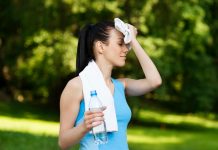
Transplant in simple terms can be described as replacing the malfunctioned organ with the healthy donor organ. Transplant is the last option preferred by healthcare professionals when other medications and surgical procedures don’t work. Broadly, an organ is replaced with another organ. But how it feels to possess two hearts, beating different rhythms in the chest cavity? Two hearts in the chest cavity, sharing the work and getting the job done! Interesting? This is heterotopic heart procedure.
There are 2 ways to perform heart transplant: First and the most conventional way is orthotopic procedure. In this procedure the patient’s heart is replaced with the donor heart. Second and the rarely used method is heterotopic heart transplant, also known as piggyback transplant. Heterotopic heart transplantation is a surgical procedure that incorporates a graft which provides biological biventricular support when connected to heart.
During the heterotopic heart transplant, the patient’s heart is not removed before implanting the donor heart. Donor heart is positioned in the body in a manner to represent the double heart. The chambers and the blood vessels of both the hearts connected to each other. To elaborate, the donor’s heart or the new heart is placed on the right side of the patient’s heart or indigenous heart. The donor and recipient’s filling chamber (left atrium), are surgically connected. This allows the flow of oxygenated blood from indigenous heart to new heart. The left ventricle of new heart, pump this blood in patient’s aorta causing efficient flow of the blood to all body parts. The right side of the original heart functions normally and pumps the blood to lungs.
There are three reasons for preferring the heterotopic over orthotopic procedure:
- Donor heart is small and may not be able to function alone
- Donor heart is weak and requires the recipient’s heart to assist it function
- Pulmonary hypertension in the recipient
Heterotopic heart procedure offers several advantages. Patient’s heart can be recovered with the help of donor heart and similarly original heart assists the donor heart recovery from the injury during transplant procedure. The recipient is secure even if donor heart is rejected. However, there are few disadvantages as well. There is a risk of infection to the native heart. Continuing angina from the original heart muscle to the new heart. This procedure involves risk and difficulty as heart is opened four times to make necessary connections. This procedure offers heart transplant opportunity to the patients otherwise restricted from doing so.
Undoubtedly age has got negative impact on heart’s pumping ability. Several reasons inhibit the efficient pumping of the blood from heart. For instance, narrowing of the arteries or high blood pressure. It is practically impossible to reverse all the conditions contributing to congestive heart failure. Some procedures can provide symptomatic relief and support the patient to live longer. Lifestyle factors are extensively contributing to the risk of heart failure such as: cigarette smoking, consuming food with high cholesterol content and bodily inactivity contributing to the increased weight.
Heart failure can be chronic and acute. Some symptoms include shortness of breath, rapid or irregular heartbeat, persistent cough or wheezing with white or pink blood-tinged phlegm, fatigue and weakness, swelling in legs, ankles and feet and others.
Heterotopic heart transplant is the valuable treatment procedure for the patients with pulmonary hypertension and pulmonary vascular resistance. According to research article published by Hannah Copeland and Jack G. Copeland in IntechOpen, heterotopic heart transplant recipients lived well and had the typical post heart transplant survival as an orthotopic heart transplant. Heterotopic heart recipient showed symptomatic improvement in pulmonary hypertension and severe pulmonary vascular resistance.
Most of the countries address the issue of excessive waiting time to find heart donors to carry out the transplantation procedures. Heterotopic heart transplant is believed to increase the donor pool and reduce the waiting time without increasing morbidity. Heterotopic heart transplant is a blessing in case of donor-recipient heart size mismatch. This procedure allows the use of marginal donor hearts that may have got wasted. Heart transplant surgery is crucial in children and infants with cardiomyopathy. Shortage of paediatric donors and long-term immunosuppression restricts the treatment regime. Heterotopic heart transplant reduces the waiting time and also enables prolonged offloading of the left ventricle resulting in functional recovery of the recipient’s heart.
More recently, results have shown that heterotopic heart transplant recipients have reduced incidence of hypertension as compared to recipients with orthotopic heart transplant. Both the groups received same immunosuppression protocols. Heterotopic heart transplant procedure has characteristically got its niche segment for exploitation which is a blessing for the patients who are denied or unable to receive heart transplant.














